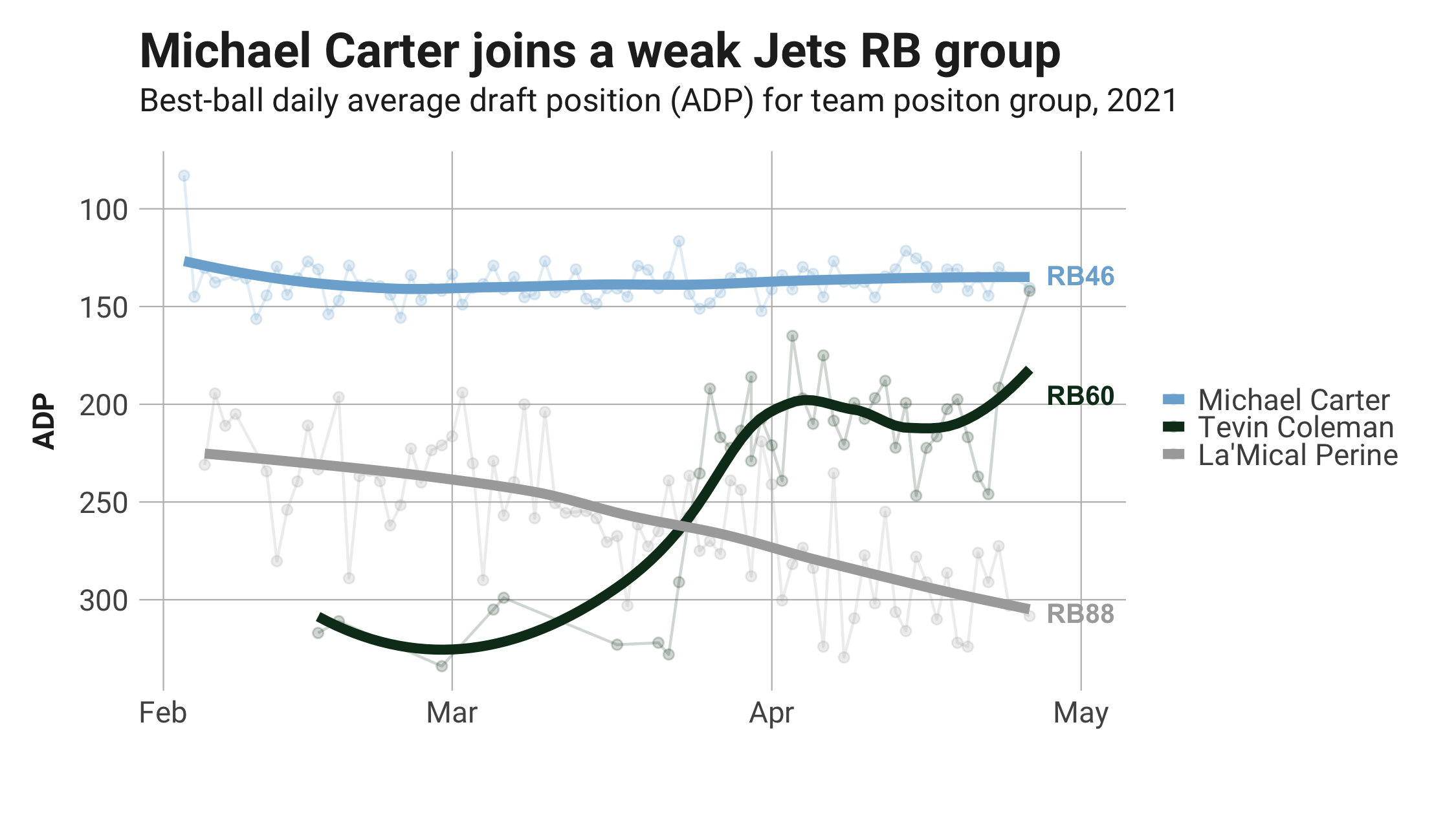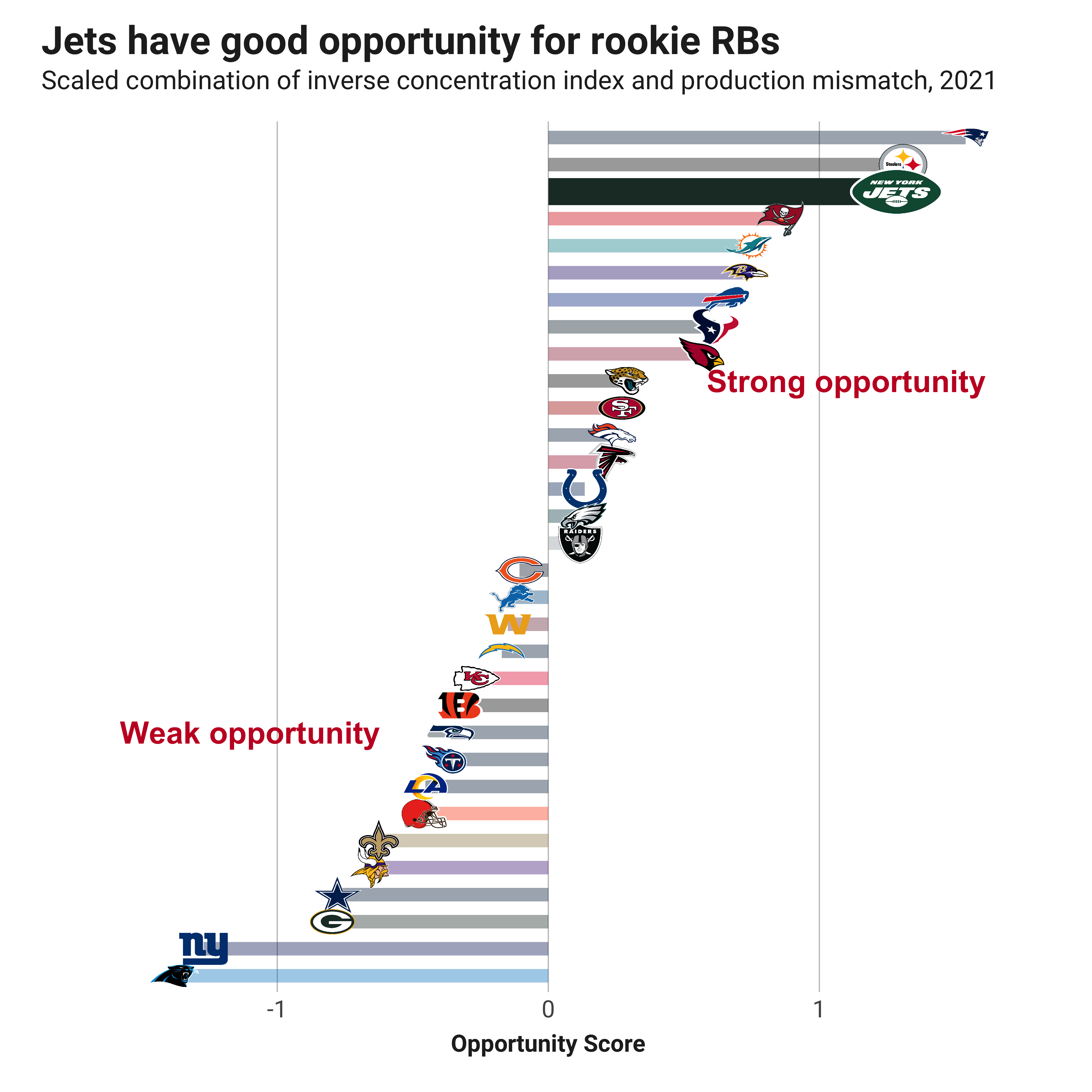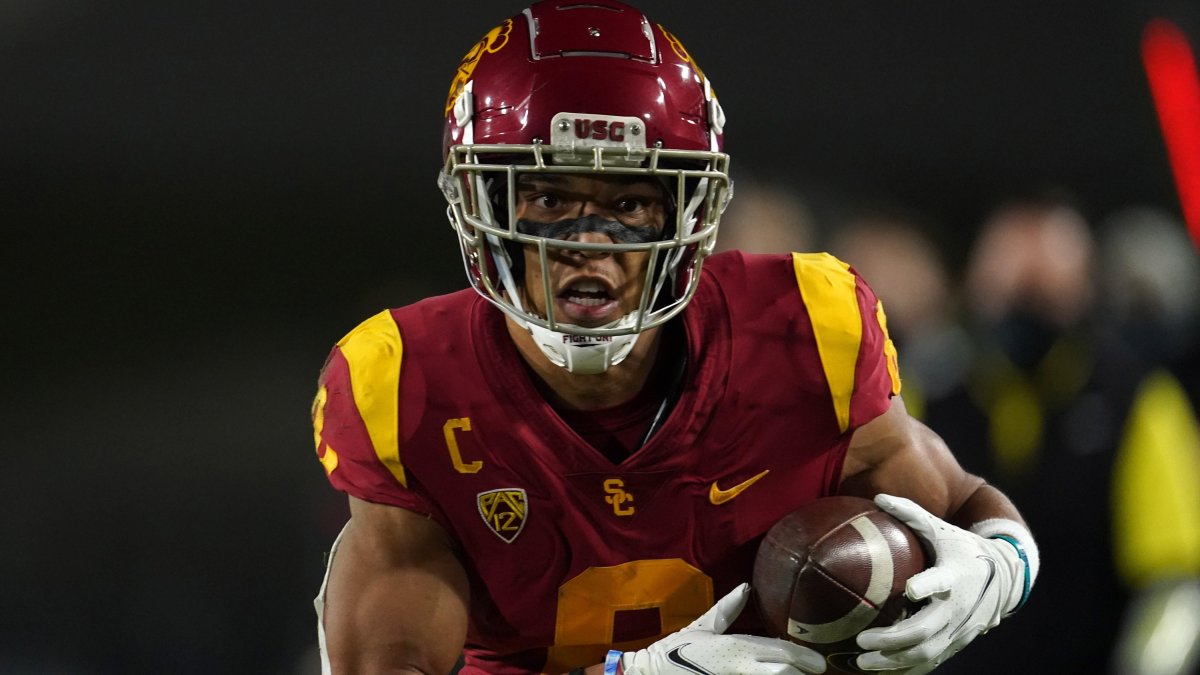Last week, I introduced my opportunity scores model, which combines a few metrics for position group strength with best ball average draft position (ADP) to quantify which teams have the most opportunity for rookie wide receivers and running backs in 2021. After Rounds 1, 2 and 3, I looked into the opportunity for all wide receivers and running backs drafted and added commentary around where I expect ADPs to move post-draft.
Below, I’ll update the opportunity scores for a handful of wide receivers and running backs drafted on Day 3 with top-notch landing spots. I'll also walk through the ADPs of the position group each selection is joining, highlighting whether the rookie addition should slot in immediately as a strong producer and have a clear window to WR1 or RB1 status in the near future.
More of PFF's 2021 NFL Draft tools here:
2021 NFL Draft Big Board | 2021 NFL Draft Grades | 2021 NFL Draft Guide | 2021 NFL Draft Stats Export | NFL Mock Drafts | NFL Mock Draft Simulator
PICK 107: MICHAEL CARTER, NEW YORK JETS
The Jets were able to hold off on the “need” of running back until the early third round, where they landed Michael Carter. Carter was more productive on the ground than backfield-mate Javonte Williams the last two years and profiles as a discount Clyde Edwards-Helaire.
Going into the draft, the Jets had two running backs with best-ball ADPs, though the highest was Tevin Coleman at RB60.

Strictly in terms of opportunity for share of the backfield, the Jets might be the best landing spot for a rookie. But the opportunity score also takes into consideration the total projection for backfield production, and the Jets are forecasted to struggle in 2021 with rookie Zach Wilson behind center.
Carter might not have the traditional size of a workhorse back at 201 pounds, but he played bigger as one of the best collegiate tackle-breakers and has a good BMI at only 5-foot-8.

Exclusive content for premium subscribers

WANT TO KEEP READING?
Dominate Fantasy Football & Betting with AI-Powered Data & Tools Trusted By All 32 Teams
Already have a subscription? Log in



 © 2025 PFF - all rights reserved.
© 2025 PFF - all rights reserved.